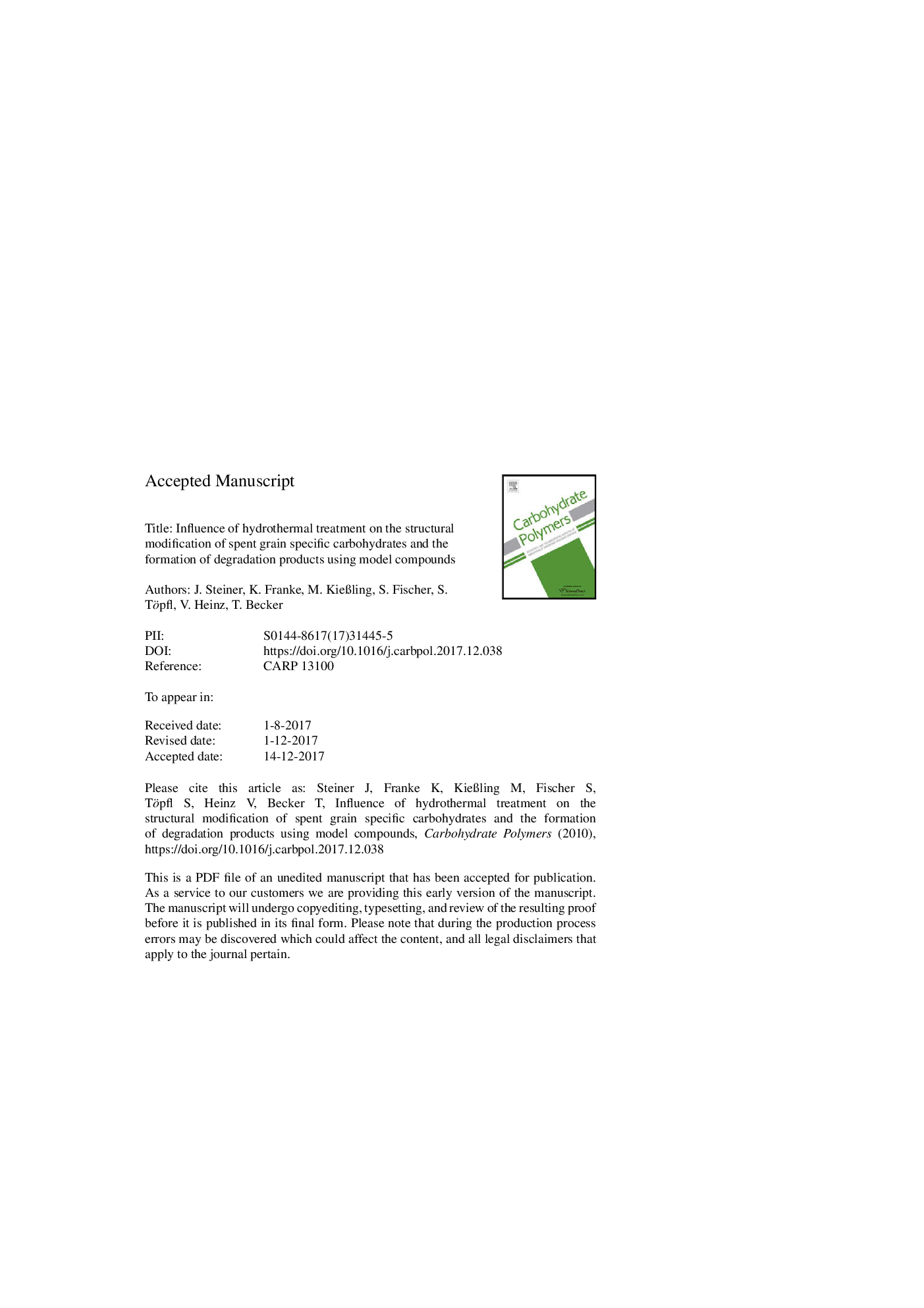| Article ID | Journal | Published Year | Pages | File Type |
|---|---|---|---|---|
| 7783953 | Carbohydrate Polymers | 2018 | 18 Pages |
Abstract
Brewer's spent grain (BSG) constitutes various valuable carbohydrates that may contribute to a healthy diet. These components may be obtained from BSG via hydrothermal treatment (HT), a procedure for dissolving water-inextricable carbohydrates. The objective of this study was to investigate HT as an environmentally friendly technology for extracting high-molecular-weight fiber with proven beneficial effects on human health. Cellulose, β-glucan, and arabinoxylan (AX) served as model substances and were subjected to auto-hydrolysis at different temperatures and reaction times. The results were evaluated in terms of structural and chemical characteristics. When the treatment temperature was increased, the original weight-average molar mass of AX (370â¯kDa) and β-glucan (248â¯kDa) decreased gradually (<10â¯kDa), and the molar mass distribution narrowed. Further investigations focused on the heat-induced formation and elimination of monosaccharides and undesirable by-products. The concentrations of by-products were successfully described by kinetic models that can be used to optimize the hydrolysis process.
Keywords
number-average molar massMALLSHMFLHWBSGAF4arabinoxylan5-Hydroxymethylfurfuralβ-glucanLiquid hot waterAsymmetrical flow field-flow fractionationMolar massweight-average molar massBrewer’s spent graindegree of polymerizationHydrothermal treatmentRefractive indexmulti-angle laser light scatteringPolysaccharides
Related Topics
Physical Sciences and Engineering
Chemistry
Organic Chemistry
Authors
J. Steiner, K. Franke, M. KieÃling, S. Fischer, S. Töpfl, V. Heinz, T. Becker,
